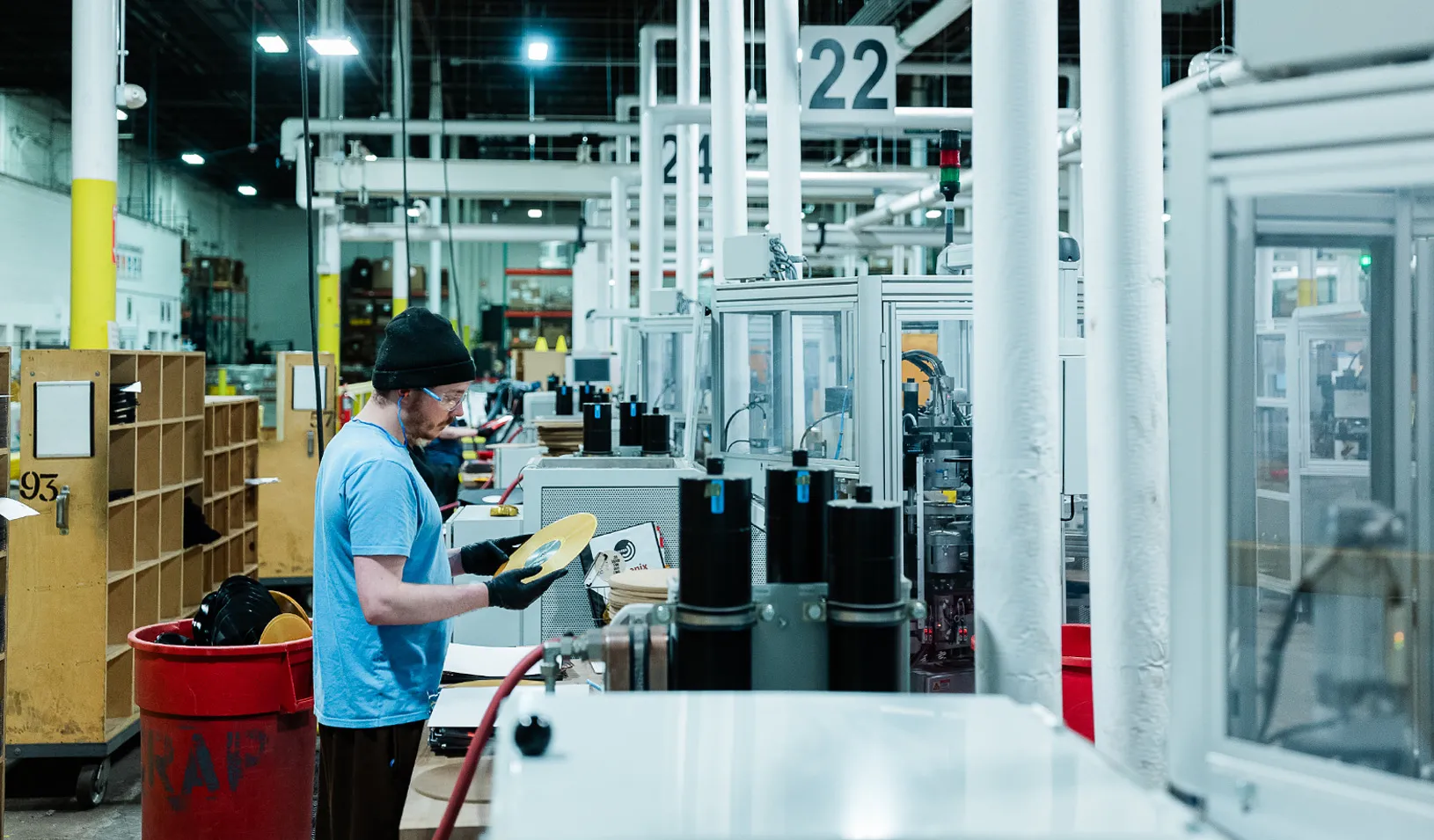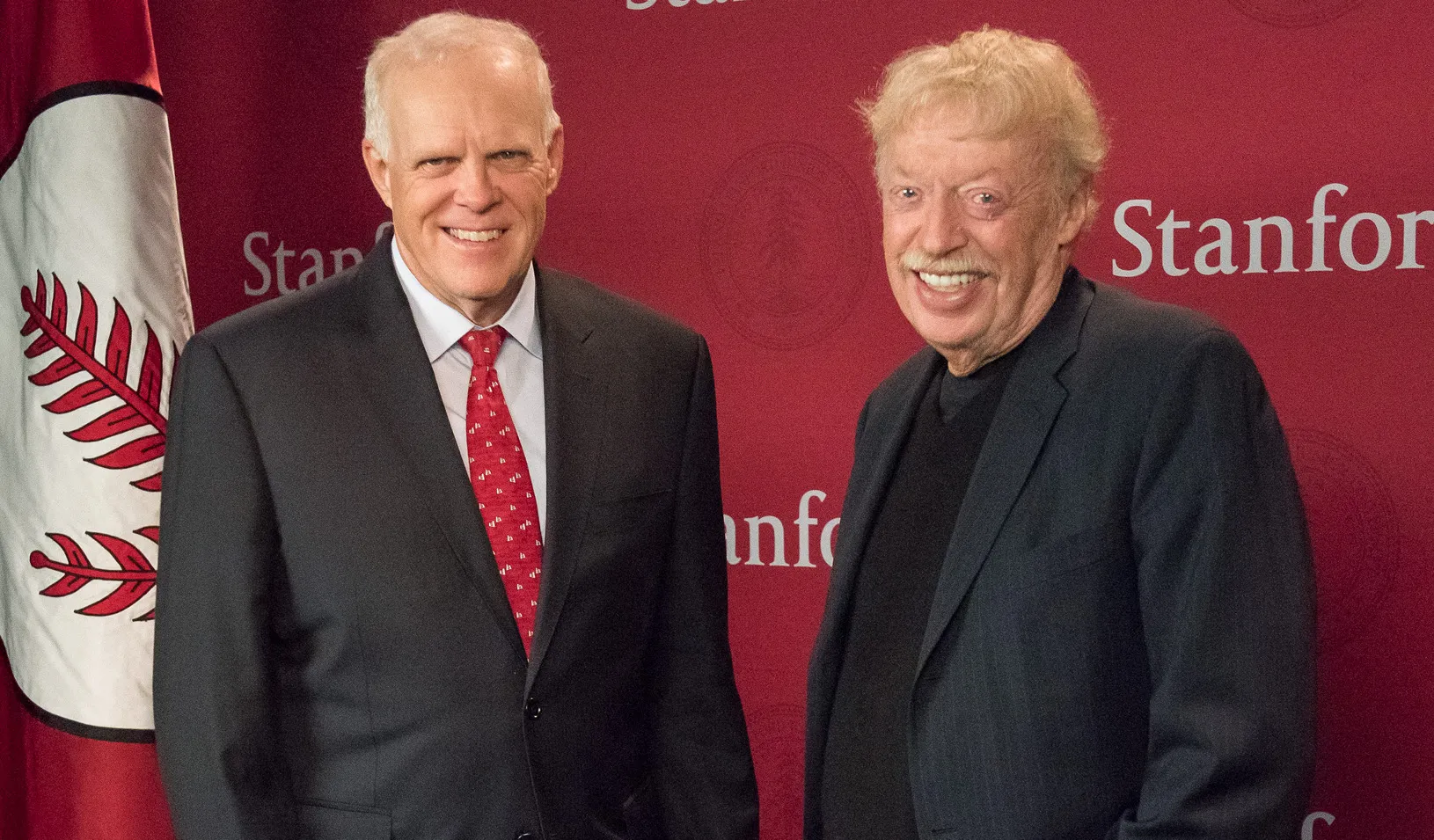Night Class: Students Get Up-Close Look at Faculty Research Projects
Insights and Bites offers evening sessions with an informal vibe
February 08, 2024

Students gave high marks to the first sessions of Insights and Bites. | Elena Zhukova
Nearly 300 Stanford GSB students discovered a learning opportunity recently that didn’t appear in any of their pre-admittance readings about the school. In six one-hour evening sessions, GSB faculty discussed their current research, took questions from students, and joined them for a few bites of pizza in an informal new program called Insights and Bites.
Finance professor and Senior Associate Dean for Academic Affairs Amit Seru helped launch Insights and Bites last fall, with additional sessions scheduled for February and May.
The impetus for the pilot, says Seru, was the recognition that many students are eager to learn more about the cutting-edge research happening at the GSB, but are exposed to only a small fraction of it in their courses. “Faculty often don’t get the opportunity to talk about their current research in the classroom,” Seru says. “And many times classes with a set curriculum are not the right forum to talk about a research topic in detail. These evenings offer live interaction around a particular topic.” The design of the sessions were inspired by a series of talks run previously by finance professor Jonathan Berk.
In addition, the program highlights work that aligns with the GSB’s Business, Government, and Society Initiative. “We have lots of faculty currently working on topics that connect to these issues that would generate interesting discussions with students,” Seru says.
Students may choose from a small menu of offerings — typically two or three faculty will present concurrently in one evening. Eight GSB faculty participated in the first Insights and Bites events.
Leading off was Nobel Prize-winning economist Guido Imbens, who described why experiments are the preferred way of teasing out causality in a study. He unpacked the challenges of designing an experiment and the necessity of incorporating “multiple randomization” in studies with no true control group.
Accounting professor Rebecca Lester described the factors that have shaped U.S. policy on taxing multinational corporations and the effects of those policies. In particular, Lester walked students through examples — and the associated outcomes — of policy changes in the early 2000’s that allowed U.S. corporations to repatriate offshore income at a lower tax rate.
Using data from a recent three-year study, political economy professor Neil Malhotra revealed a surprising result: the social media platforms Facebook and Instagram did not increase political polarization as many people had asserted. The design of the research itself was of great interest to students, along with how the findings could inform regulators going forward.
Economics professor Susan Athey, who is currently the chief economist for the United States Department of Justice, used her session to address the effects of technology on society. Much of Athey’s work examines the impact of various interventions and how those findings could be used to develop programs or products that expand access and increase engagement for under-resourced communities.
The banking crisis that led to the collapse of Silicon Valley Bank and weakness in the financial sector was the subject of a talk by professors Peter DeMarzo, Arvind Krishnamurthy, and Seru. Higher interest rates place stress on banks whose liquidity may be insufficient to weather the loss of lots of depositors, they noted. Their studies revealed potentially worrisome long-term systemic issues that could result in a more widespread crisis.
Stanford Business, Government & Society Initiative
The Business, Government & Society Initiative focuses on transformative issues facing the world, including technology, free markets, and sustainability.
Leveraging the school’s leadership expertise, the initiative is dedicated to supporting new models of cutting-edge research, bringing changemakers together, and enhancing the curriculum to prepare responsible leaders for a dynamic world.
The “13-inch office” described in marketing professor Jonathan Levav’s presentation referred to the typical size of a laptop, the primary means of collaborating with coworkers in a remote environment. He described his research that revealed significant differences in creativity between in-person collaboration and that conducted virtually. Business leaders should be assigning days in the office based on what tasks their employees are being asked to perform, Levav said, to maximize innovation.
The sessions were a hit with students. After-event survey responses were mostly positive: “Excellent speakers and research backed insights. Learned a lot.” “Thorough analysis, blended perspectives, intellectually accessible with no required prior knowledge.”
Seru believes the informality of the program led to a comfortable rapport and promoted robust discussion. “Faculty wanted students to chime in during their presentations, and we saw that happening in every session with several insightful comments from students.”
Next up is an Insights and Bites series of sessions on February 15. Seru hopes the program continues to expand, possibly opening up the evening discussions to alumni.
For media inquiries, visit the Newsroom.
Explore More
Maker: United Record Pressing

Phil Knight Honored with Uncommon Citizen Award

Catherine Roberts Joins Stanford GSB as CCMO
